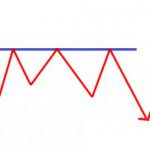
You should have a “game plan” for your investing life. Just as you plan your workday, vacation, college financing, golf matches, and other areas of your personal and professional life, you need a plan, objective, and goal for your investment activities.
Spend some quality time with yourself, thinking about what you really want to accomplish. Stating that you simply want to make money or become wealthy is not helpful. There is no specific target or goal. Without a target, you’re a walking example of Yogi Berra’s great quote: “We’re totally lost, but we’re making good time.”
Create a game plan and target showing where you want your portfolio to be as compared to your desired objective. If you want income, decide how much income and in what time periods you’d like to receive it. Looking for appreciation? Decide what appreciation and growth percentage you’d like. The goal and target you select is less important than the requirement of having a comparison mechanism. This gives you a working “scorecard” of your performance. You can change, ratchet up or down your comparison target as often as you wish. Just be sure to have something to measure your performance.
Comparing Your Portfolio to Benchmarks
So, you’ve bought several stocks that you have spent hours researching and one month later, you have gained 2 percent. You’re a hotshot investor, right? Maybe, maybe not.
How well did the overall stock market perform during that time frame? Because if the overall market gained 5% in that same month, then you’re really wasting your time. Instead, you could have bought an ETF that mimics the overall stock market like SPY and made more money with less effort.
On the other hand, if the overall market fell by five percent over that period, then you are quite a savvy investor (at least over that short time frame). Many professional traders are not able to beat the market over 1 year, let alone 5 or 15 years.
Let’s look at some common stock market benchmarks:
The S&P 500 index takes the prices for the 500 largest companies in America and averages them into a single number so that is easy to see the overall direction of the stock market. It is generally the most used index for benchmarking stock portfolios. You can buy an ETF that mimics the S&P 500 – its ticker symbol is SPY.
The Wilshire 5000 index captures the entire of U.S. stocks large and small and is the broadest measure of U.S. stock market performance. The ETF that mimics the Wilshire 5000 is TMW. The Russell 2000 index captures the world of smaller publicly traded companies in the United States. The ETF that mimics the Russell 2000 is IWM.
There are also benchmarks for stocks traded in other countries like the TSX index (Canada), the Nikkei (Japan), the DAXX (Germany) and virtually every country in the world that has a stock market.
 Teacher Introduction Webinars
Teacher Introduction Webinars Broadening Bottom
Broadening Bottom What Is A Stock Presentation
What Is A Stock Presentation Resistance Line
Resistance Line